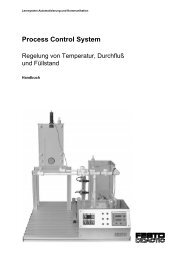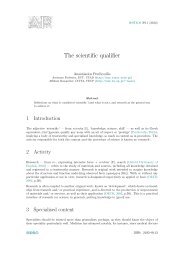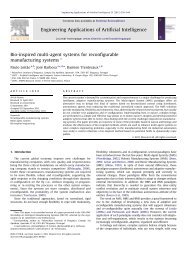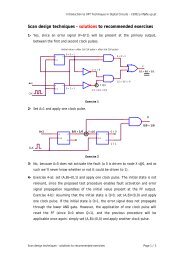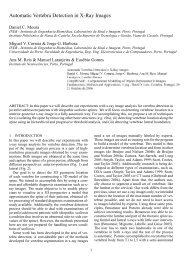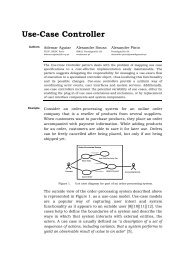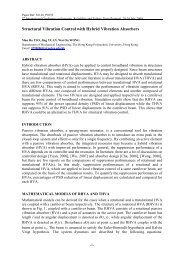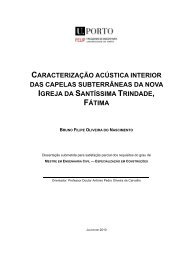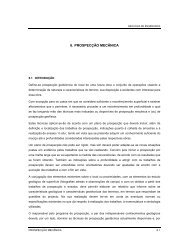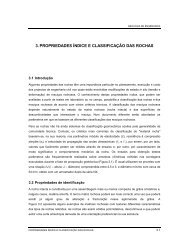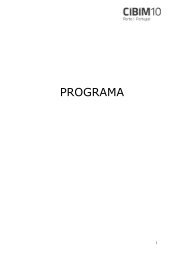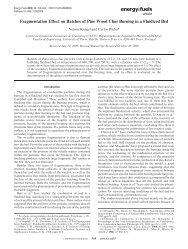MASTER IN CIVIL ENGINEERING - Faculdade de Engenharia da ...
MASTER IN CIVIL ENGINEERING - Faculdade de Engenharia da ...
MASTER IN CIVIL ENGINEERING - Faculdade de Engenharia da ...
Create successful ePaper yourself
Turn your PDF publications into a flip-book with our unique Google optimized e-Paper software.
Soil Mechanics II<br />
Credits Contact Time Total Time<br />
6 ECTS 75 160<br />
Objectives, Skills and Learning Outcomes<br />
Introduction to the concepts, theories and methods used in Civil Engineering for the<br />
<strong>de</strong>sign of works and structures whose stability relies on the mechanical behaviour of<br />
soil masses.<br />
Program<br />
Classical theories of lateral earth pressure. At-rest state of stress. Rankine active and<br />
passive states. Strains associated with Rankine states. Active and passive thrusts.<br />
Caquot-Kérisel tables. Coulomb theory. Mononobe-Okabe theory to estimate active<br />
and passive pressures un<strong>de</strong>r seismic conditions.<br />
Design of gravity retaining walls. Mo<strong>de</strong>s of failure. Global safety factors. Limit state<br />
<strong>de</strong>sign and partial safety factors in Geotechnics. Introduction to Euroco<strong>de</strong> 7 -<br />
Geotechnical Design.<br />
Stability of slopes and embankments. Solutions for infinite slopes. Wedge method.<br />
Fellenius and Bishop methods. Stability of embankments on soft soils. Methods for the<br />
improvement of stability. Stability of cuttings in cohesive soils. Stabilization of natural<br />
slopes. The role of observation.<br />
In situ testing versus laboratory testing. Penetration tests: SPT, CPTU (piezocone) and<br />
dynamic probing. Vane-shear test. Cross-hole seismic test. Plate load test.<br />
Pressuremeter tests: Ménard and self-boring pressuremeter.<br />
Shallow foun<strong>da</strong>tions. Bearing capacity. Theoretical solution and correction factors for<br />
shape, inclination of the load and influence of a rigid boun<strong>da</strong>ry and account for the<br />
eccentricity of the load. Immediate settlement. Elastic solution and semi-empirical<br />
corrections. Criteria for evaluating soil <strong>de</strong>formability modulus for estimating the<br />
settlement. Allowable settlement. Effect of soil-structure interaction on the<br />
distribution of the loads on the foun<strong>da</strong>tions and on the induced settlements.<br />
Introduction to pile foun<strong>da</strong>tions. Bearing capacity. Classical method and empirical<br />
method based on the results of CPT or DMT tests.<br />
Compaction. Basic concepts. Compaction curve. Proctor test. Energy of compaction.<br />
Compaction in the lab versus compaction in the field. Compaction equipments. Control<br />
of compaction in the field.<br />
Master in Civil Enginerring Page 27



